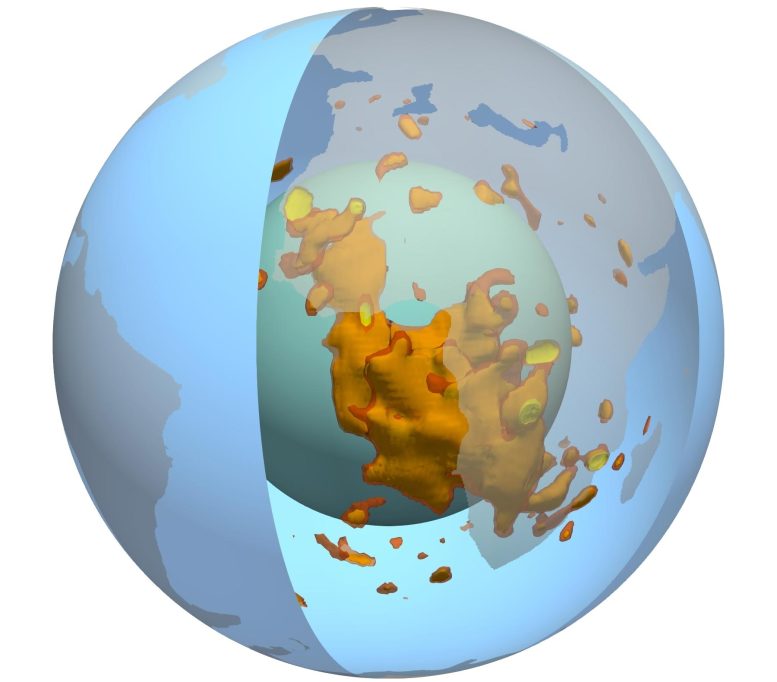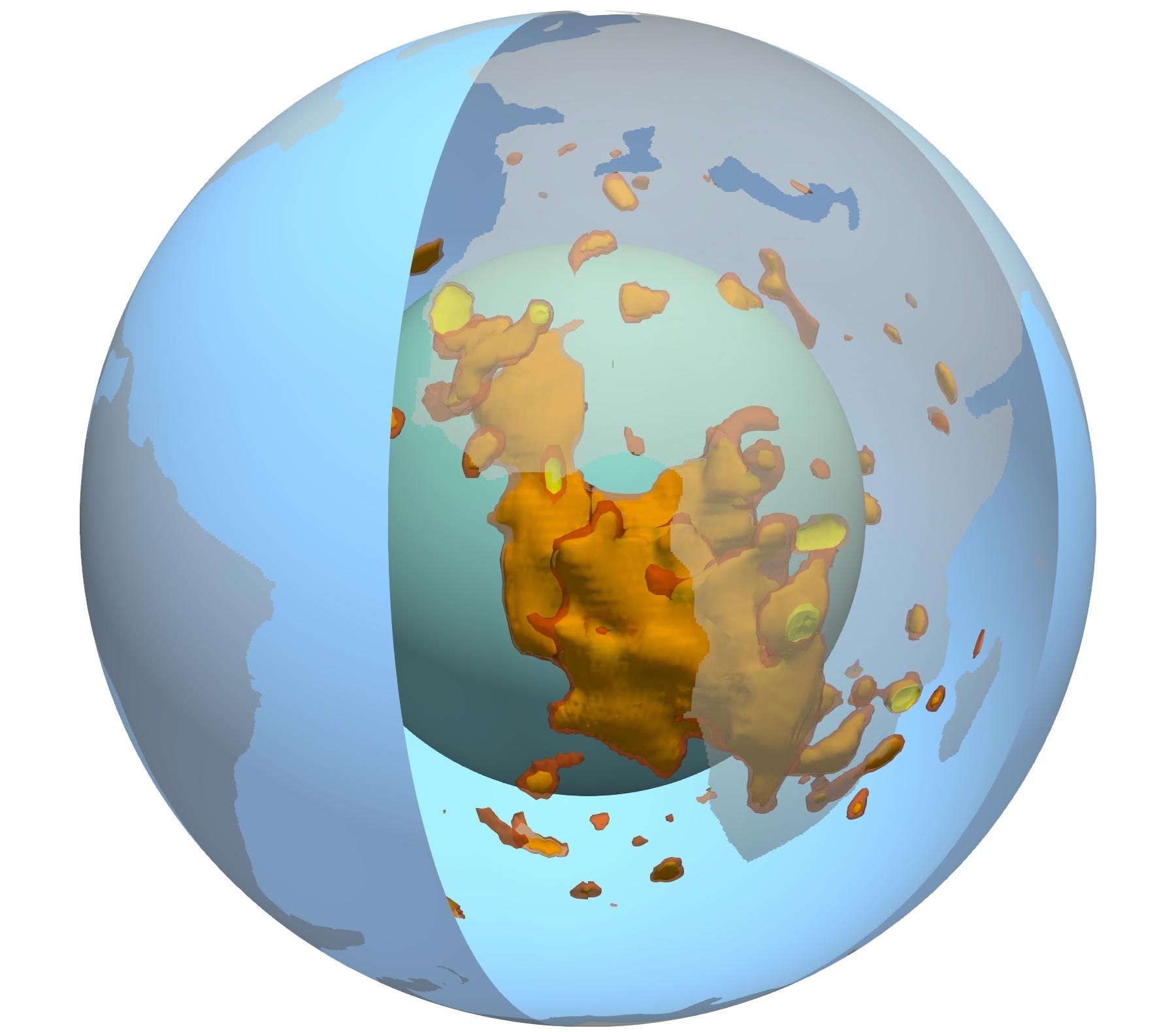
3D pohľad na kvapku v zemskom plášti pod Afrikou, znázornený červeno-žlto-oranžovými farbami. Azúrová farba predstavuje hranicu jadro-plášť, modrá povrch a priehľadná sivá kontinenty. kredit: Mingming Li/ASU
Zem je vrstvená ako cibuľa s tenkou vonkajšou vrstvou, hrubým viskóznym plášťom, tekutým vonkajším jadrom a pevným vnútorným jadrom. Vo vnútri plášťa sú dve veľké kvapôčky podobné štruktúry zhruba na opačnej strane planéty. Kvapky, formálne známe ako Large Low-Sheer-Velocity Provinces (LLSVPs), majú veľkosť každého kontinentu a sú 100-krát vyššie ako Mount Everest. Jedna je pod africkým kontinentom, zatiaľ čo druhá je pod Tichým oceánom.
Pomocou prístrojov, ktoré merajú seizmické vlny, vedci vedia, že tieto dve kvapôčky majú zložité tvary a štruktúry, no napriek ich kľúčovým vlastnostiam je málo známe o tom, prečo kvapky existujú alebo aký majú zvláštny tvar.
Vedci z Arizonskej štátnej univerzity Qian Yuan a Mingming Li zo Školy prieskumu Zeme a vesmíru sa rozhodli dozvedieť sa viac o týchto dvoch kvapôčkach pomocou geodynamického modelovania a analýzy publikovaných seizmických štúdií. Prostredníctvom svojho výskumu boli schopní určiť, ako kvapky dosahujú maximálnu výšku a ako objem a hustota kvapiek, ako aj viskozita okolia v plášti, môžu kontrolovať ich výšku. Ich výskum bol nedávno publikovaný v r
The results of their seismic analysis led to a surprising discovery that the blob under the African continent is about 621 miles (1,000 km) higher than the blob under the Pacific Ocean. According to Yuan and Li, the best explanation for the vast height difference between the two is that the blob under the African continent is less dense (and therefore less stable) than the one under the Pacific Ocean.
To conduct their research, Yuan and Li designed and ran hundreds of mantle convection models simulations. They exhaustively tested the effects of key factors that may affect the height of the blobs, including the volume of the blobs and the contrasts of density and viscosity of the blobs compared with their surroundings. They found that to explain the large differences of height between the two blobs, the one under the African continent must be of a lower density than that of the blob under the Pacific Ocean, indicating that the two may have different composition and evolution.
“Our calculations found that the initial volume of the blobs does not affect their height,” lead author Yuan said. “The height of the blobs is mostly controlled by how dense they are and the viscosity of the surrounding mantle.”
“The Africa LLVP may have been rising in recent geological time,” co-author Li added. “This may explain the elevating surface topography and intense volcanism in eastern Africa.”
These findings may fundamentally change the way scientists think about the deep mantle processes and how they can affect the surface of the Earth. The unstable nature of the blob under the African continent, for example, may be related to continental changes in topography, gravity, surface volcanism and plate motion.
“Our combination of the analysis of seismic results and the geodynamic modeling provides new insights on the nature of the Earth’s largest structures in the deep interior and their interaction with the surrounding mantle,” Yuan said. “This work has far-reaching implications for scientists trying to understand the present-day status and the evolution of the deep mantle structure, and the nature of mantle convection.”
Reference: “Instability of the African large low-shear-wave-velocity province due to its low intrinsic density” by Qian Yuan and Mingming Li, 10 March 2022, Nature Geoscience.
DOI: 10.1038/s41561-022-00908-3


